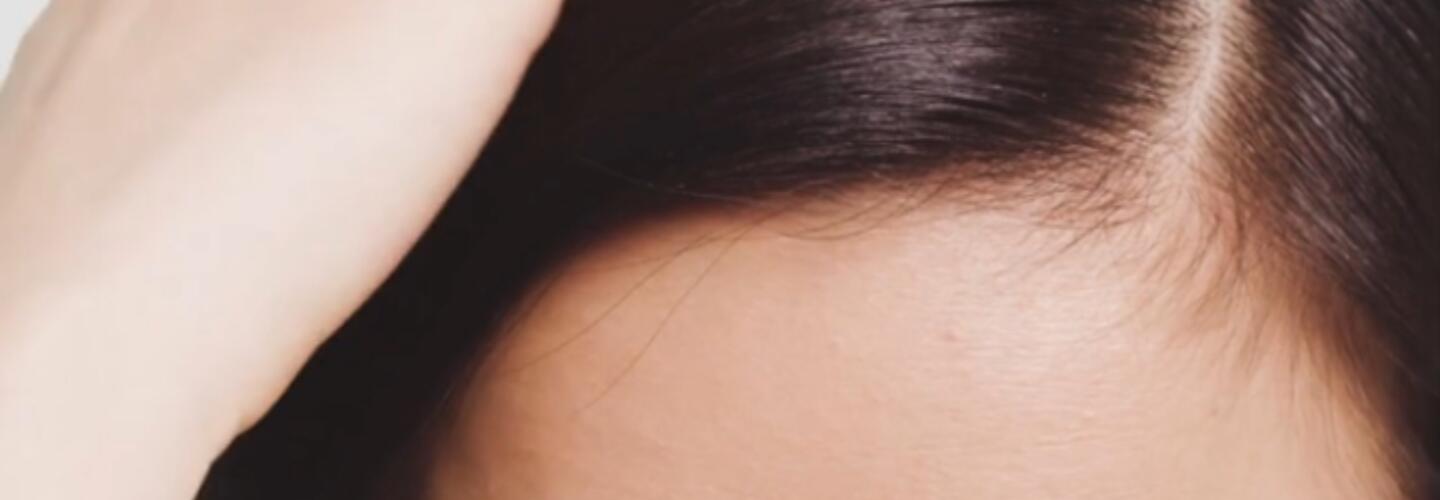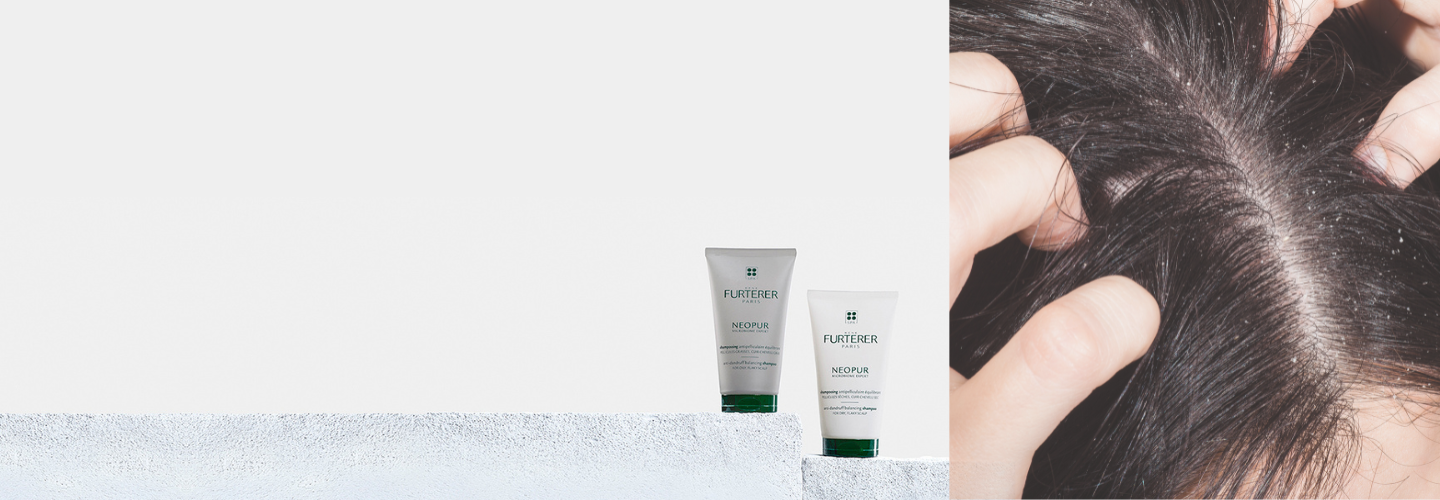
The appearance of dandruff is a medically trivial and common condition. It affects one in two people at some point in their lives.
But it is a different story when you consider the impact of dandruff on the social life and well-being of those suffering from dandruff. The presence of this white powder on the shoulders or stuck to the scalp can be very unattractive and seen as a form of neglect.
For an anti-dandruff treatment to be effective, it must be perfectly suited to the problem. It is therefore important to know what type of dandruff you suffer from and what has caused it.

IN LESS THAN 2 MINUTES
Like the cells in the entire body, the epidermal cells of the scalp are regularly renewed.
This causes the outer layer of the epidermis to peel off, which is perfectly normal. Dead scalp cells are then shed as tiny flakes. This process is invisible, as each mass is very small. They measure about 30 microns.
The normal turnover time of scalp cells is 21 days.
However, following an inflammation that causes excessive peeling, cell renewal can accelerate. It can be reduced to only 7-10 days instead of the usual 21 days.
Dead cells multiply and accumulate. And the masses can then reach a size of more than 200 microns. This makes them visible. This is called dandruff.
Dandruff consists of a group of several dead cells bound together by a form of cement. They are sufficiently large and consistent enough to be noticeable and form the “ powdery snow ” we are all so familiar with.
Contrary to what you might think, or hear, dandruff is not itself a fungus.
Instead, the appearance of dandruff begins with the action of Malassezia Globosa, a fungus that occurs naturally in the microbial flora of the scalp of every individual.
This flora is also called the microbiota. When the presence of certain yeasts increases, this leads to an imbalance in the microbiota. And, as a result, this causes the appearance of dandruff.
This yeast feeds on sebum, which is supposed to protect the scalp, and in turn produces fatty acids that irritate the scalp. This is what is responsible for the itching sensation.
The scalp reacts to this irritation by accelerating the cell renewal process, which in turn increases flaking. The vicious cycle begins!
This is a question we often hear in our salons and in the hair institute.
The cause of dandruff is not yet fully understood. However, it seems that their appearance is the result of a combination of different factors that cause the scalp to become imbalanced.
The scalp is a highly sensitive and reactive area. Not surprising when you consider that it has twice as many sensory receptors as the skin of the face!
The formation of dandruff varies according to hormonal secretions or other factors, internal or external, that cause its appearance, such as:
We have described how dandruff forms and tried to explain its cause. To describe these dandruff types in more detail, we also need to discuss their classification.
This is the kind that causes the appearance of “white snow” on the shoulders.
It is rare in children. This type of dandruff appears at puberty and tends to decrease with age. It causes the most issues between the ages of 20 and 30.
These conditions occur in flare-ups, sometimes triggered by stress, but also by dietary, medicinal or seasonal factors. This type of dandruff is indeed less abundant in summer than in winter.
There are two easy-to-differentiate sub-categories, according to their appearance and their adherence to the scalp: dry or oily dandruff.
This category of dandruff includes seborrheic dermatitis of the scalp, psoriasis, ichthyosis, ringworm and pityriasis amiantacea.
These are chronic scalp conditions that require medical attention.
Let's go back to the simple dandruff conditions. There are 2 types of dandruff, depending on the nature of the scalp. A rather dry scalp will produce dry dandruff, while an oily scalp will produce oily dandruff.
This dandruff consists of very fine dry particles, as the name suggests, which easily detach from a dry scalp.
This is the most common type of dandruff. Dry dandruff appears mainly between the ages of 15 and 30. For these people, there is an accelerated renewal of the scalp cells: 7 to 10 days instead of the usual 21 days.
This dandruff looks like a dry, fine, white or greyish powder. It flakes off when the scalp is lightly scratched.
Dandruff doesn’t stick to the scalp, which is dry, but it has no redness or oozing. However, it can cause irritation.
This condition can be corrected quickly with the appropriate treatment. It should be noted that, although this problem is easily resolved, it can reoccur.
It is therefore advised to use an anti-dandruff shampoo based on natural active ingredients that will not further damage the scalp. Quite the opposite, they will promote the natural rebalancing of the microbiota to achieve lasting results. The aim is to prevent recurrence.
Oily dandruff is much larger than dry dandruff because it is bound together by sebum, which acts as a glue.
Unlike dry dandruff, oily dandruff can affect the hair.
Being stuck together, they form a compact type of sludge on the surface of the scalp, which suffocates the hair roots and can lead to hair loss. The more sebum is secreted, the more the epidermis is suffocated. The more the epidermis suffocates, the more sebum it produces. This is a vicious circle that absolutely must be broken.
Oily dandruff is found on the scalp, mainly on the temples and behind the ears. It has the appearance of greasy, yellowish flakes, joined by sebum. These dandruff patches stick to the hair and are is exacerbated by scalp inflammation. They can also cause itching.
A gentle, natural shampoo with sebum-regulating action will regulate sebum production. In order to effectively combat the production of oily dandruff, the scalp must first be rebalanced.
Lice have several stages of development. When they are in the egg state, they have a yellowish, shiny colour. In the adult state, they are small animals that move on the skull. In these two cases, they cannot be mistaken for dandruff.
However, nits, like dandruff, are whitish in colour.
So how can you tell lice from dandruff?
Dandruff is present on the scalp and hair. And it slips easily through the hair. Nits, on the other hand, cling to the hair.

This is what we have been doing for more than 15 years via our ethical supply chain, certified For Life by ECOCERT, in Madagascar.